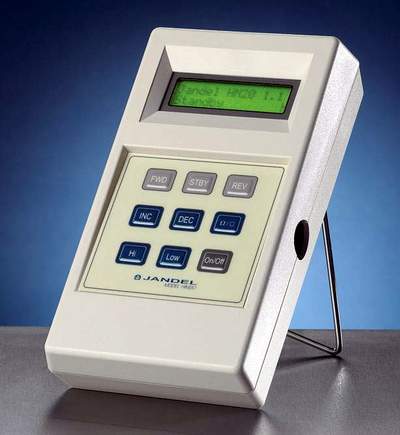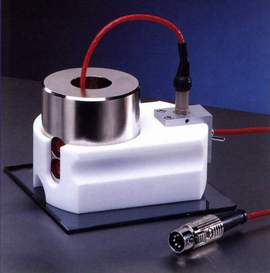|
|
||
 |
 | |
|
The Jandel HM21 is a portable meter designed for use with a four point probe to make resistivity measurements. For successful measurements the HM21 supplies a constant current and displays either the resultant voltage or the sheet resistance in ohms/square depending which function has been chosen. The HM21 includes on-board non-volatile memory so that 50 measurements can be stored in the unit and then dowloaded to a PC later. The HM21 model has replaced the former HM20 which did not have internal memory. The sheet resistance measurement range is 1 ohm/square to 10 Megohms/square (in practice you can measure down to around 0.01 ohms/square, but the accuracy may be compromised slightly). This equates to a bulk (or volume) resistivity range of approx. 0.01 ohm.cm to 100 Kohm.cm. The current is changeable in 6 steps - 100nA, 1uA, 10uA, 100uA, 1mA, 10mA. The compliance voltage is above 8.5V but slightly reduces to 7.5V at 10mA, however 10mA would usually only be used with more conductive samples where the compliance voltage is not so critical. Overall accuracy is better than 0.5% where the DVM receives greater than 1mV. For the mid ranges the accuracy is better than 0.3% The DVM has two ranges - high sensitivity up to 150mV and low range up to 1.25V. The unit is push button operated. The current is increased with the 'INC' button and decreased with the 'DEC' button. Forward and reverse current can be selected using the 'FWD' and 'REV' button. When the battery mode is used the unit returns to standby automatically to save power and turns off altogether after some period of inactivity. The automatic time to return to standby is 70 seconds with low current and with the 3 highest currents 40 seconds. This is because the lower current ranges are used with higher impedance which can take longer to settle, and the higher currents drain the power faster. The unit can be zeroed to remove any offset by pressing the Standby button when the unit is already in Standby. |
||
 Serving the American continents and many other locations worlwide.
Serving the American continents and many other locations worlwide.